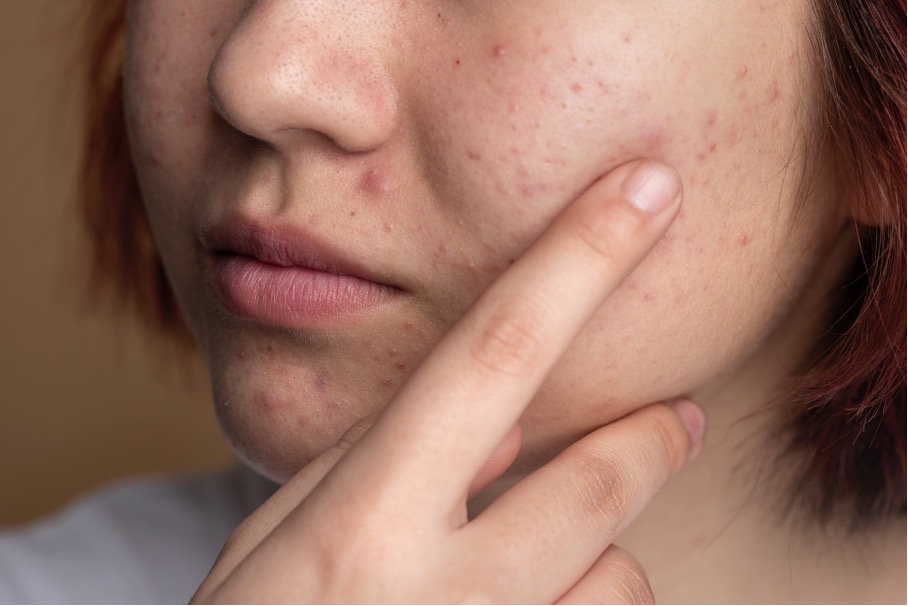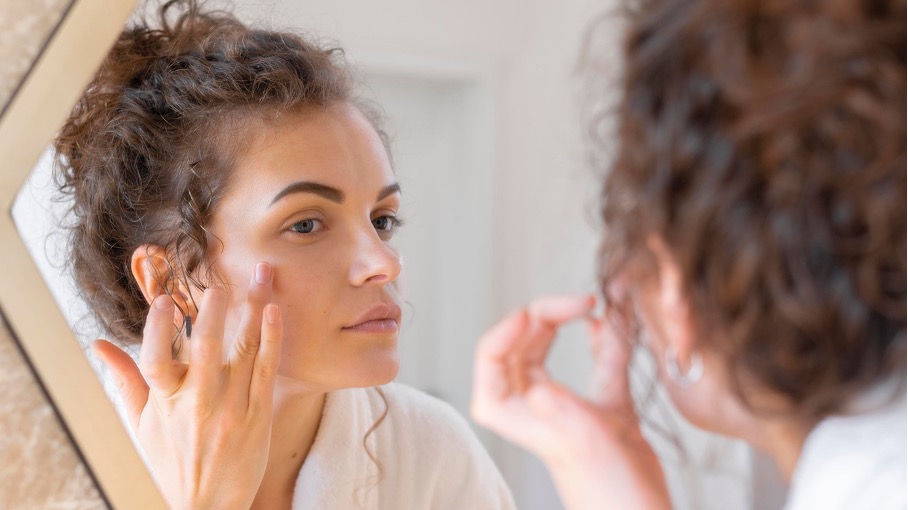In an era where instant gratification is the norm, skincare can often feel like a frustrating endeavor. It’s easy to get disheartened when results don’t appear overnight, and this impatience often extends to our skincare routines. With the abundance of products promising quick fixes and overnight miracles, it’s tempting to hop from one product to another in the quest for perfect skin— Trust me, I’ve been there!
However, the real secret to achieving healthy, radiant skin lies in patience and consistency. Dermatologists unanimously emphasize that these two factors are crucial. To succeed, we need to understand our skin’s unique cycle and set realistic expectations.
I confess, I’m one of the most impatient people you’ll ever meet. Whether it’s learning a new skill, waiting for results, or even sitting in a doctor’s office, I struggle with the concept of waiting. But when it comes to my skin, I had to learn patience the hard way during my isotretinoin treatment. It took six months to see any improvement, and during that time, my skin went through an unbearable purge. I was close to quitting, but I decided to stick it out until the end. By the seventh month, my skin finally cleared up, and I was relieved to see the transformation.
Today, I continue to practice patience with my skincare routine. I’m determined to maintain the progress I’ve made and avoid reverting to where I started.
So, let’s discover together how to be patient!
The Skincare Journey: A Marathon, not a Sprint

Much like fitness, skincare is a long-term commitment. Just as you wouldn’t expect to run a marathon after a single jog around the block, you shouldn’t expect to see dramatic changes in your skin overnight. Our skin, the largest organ of our body, operates on its own timeline, and understanding its cycle it is the first step toward achieving the results you desire.
Understanding Your Skin’s Cycle

Most people think our skin renews itself every 28 days, but I stumbled upon a study online that suggests it might actually take longer—like 40 to 56 days1. Why the difference? Well, it could be because of how the studies were conducted, who they included, and the types of skin they looked at. Also, factors like age, stress, and the environment can slow down our skin’s renewal process.
Skin renewal, also known as skin cell turnover, is basically the process where new skin cells are made, move up to the surface, and then flake off. It’s like our skin’s way of hitting the refresh button, keeping it healthy, fixing any bumps and scrapes, and making sure our skin’s defenses are up to standard.
Usually, new skin cells start out deep in our skin and then gradually make their way up through the layers. Along the way, they change and mature until they finally make it to the surface and say goodbye. But sometimes, things like getting older or dealing with stress can slow this process down, making it take longer !
When this turnover slows, it can mess with our skin’s ability to stay hydrated, regulate its color, and maintain its defenses. That’s where knowing the difference between just scrubbing away dead skin cells (that’s exfoliating) and actually encouraging our skin to renew itself comes in handy.
Understanding this can help us get the most out of our skincare routine. Since our skin has its own rhythm, expecting big changes overnight isn’t really realistic. So, when we’re trying out new skincare products, we should give our skin a bit of time to get used to them—like about 4 to 12 weeks—depending on our skin type, what we’re trying to fix, and what products we’re using.
By understanding how our skin works and what affects it, we can take better care of it and keep it looking its best!
The Role of Consistency

Consistency is the key to seeing results. And, consistency in skincare means sticking to a routine and giving products enough time to work. Here’s why it’s essential:
- We need to understand that Active Ingredients Need Time! Ingredients like retinoids, vitamin C, and alpha hydroxy acids need time to penetrate the skin and induce cellular changes. For example, retinoids can take up to 12 weeks to show significant results in reducing fine lines and wrinkles.
- Building a barrier, it’s important! Meaning, the consistent use of moisturizing and hydrating products helps in strengthening the skin’s barrier. A robust barrier is crucial for protecting the skin from environmental stressors and retaining moisture.
- And preventing breakouts! If you’re dealing with acne (like me), switching products frequently can aggravate your skin, leading to more breakouts. Sticking with a product allows your skin to adjust and respond positively over time. And we need to understand the action of purging of most of acne product!
What is Purging in Skincare?

Purging is a temporary phase that some people experience when starting new acne treatments, particularly those containing active ingredients like retinoids, AHAs (alpha hydroxy acids), BHAs (beta hydroxy acids), and certain chemical exfoliants. These ingredients accelerate the skin’s cell turnover rate, which means they help bring underlying congestion (such as clogged pores and micro comedones) to the surface more quickly than usual.
While this process can result in an increase in breakouts and blemishes, it’s important to understand that this is a sign that the product is working to clear out the impurities from your skin. Here’s a deeper look into purging:
- Duration: Purging typically lasts between 4 to 6 weeks. If the breakouts continue beyond this period, it might be an indication that the product is irritating your skin rather than helping it.
- Location: Purging usually occurs in areas where you commonly experience breakouts. If you start getting pimples in places where you normally don’t, it might be a reaction to the product rather than purging.
- Type of Blemishes: The breakouts during purging can include small whiteheads, blackheads, and minor pimples. If you notice cystic acne or severe irritation, it’s then worth consulting with a dermatologist.
Staying patient through the purge (it’s hard but a must)

Understanding that purging is a normal part of the acne treatment process can help you stay patient and consistent with your skincare routine. Here are some tips to manage purging:
- Stick to Your Routine: Despite the temporary increase in breakouts, it’s crucial to continue using your acne treatment as directed. Stopping the treatment early can prevent you from seeing its full benefits.
- Be Gentle: Avoid adding new products or using harsh exfoliants during the purging phase. Keep your skincare routine simple and gentle to avoid further irritation.
- Hydrate and Protect: Ensure you’re moisturizing properly and using sunscreen daily. Hydrated skin is more resilient and better able to heal from breakouts.
- Monitor Your Skin: Keep track of your skin’s response. If you notice excessive redness, severe irritation, or no improvement after 6 weeks, consult a dermatologist.
By understanding the concept of purging and recognizing it as a positive step towards clearer skin, you can maintain the patience and consistency needed to achieve lasting results. Remember, good skincare is a journey, not a sprint. Embrace the process, and your future self will thank you for the dedication and care you invest in your skin today.
Setting Realistic Expectations

When starting a new skincare routine, set realistic expectations. Understand that while some improvements may be noticeable within a few weeks, achieving your ultimate skincare goals can take several months. Here’s a timeline to keep in mind:
- Immediate (1-2 weeks): You might notice an increase in hydration and a slight improvement in texture.
- Short-term (4-6 weeks): Improvements in pigmentation, reduction in minor breakouts, and initial signs of a clearer complexion.
- Long-term (3-6 months): Significant reduction in fine lines, deeper hydration, and a more even skin tone.
NB: This is an estimate – may take longer! Result depends on each person!
My Tips for Staying Patient and Consistent

- Keep It Simple: A complicated routine can be overwhelming and difficult to maintain. Start with the basics: a gentle cleanser, moisturizer, and sunscreen. You can gradually add targeted treatments as needed.
- Don’t Increase Acid Percentage Immediately: When incorporating acids like AHAs, BHAs, or tretinoin into your routine, it’s important to start with lower percentages. Increasing the acid percentage too quickly can cause irritation, redness, and even damage your skin barrier. Allow your skin time to build tolerance to avoid adverse reactions and to achieve the best results.
- Track Your Progress: Take photos of your skin before starting a new routine and every few weeks thereafter. This can help you see subtle improvements that you might otherwise miss.
- Create a Ritual: Turn your skincare routine into a self-care ritual. Enjoy the process rather than seeing it as a chore.
- Stay Informed: Understand what each product does and how it benefits your skin. This knowledge can reinforce your commitment to sticking with your routine.
- Listen to Your Skin: Pay attention to how your skin responds. If you experience persistent irritation, it might be worth consulting with a dermatologist.
- Celebrate Small Wins: Acknowledge and celebrate minor improvements. This positive reinforcement can help you stay motivated.
Patience Pays Off: How I Achieved Clear Skin with Consistent Skin Care

My journey toward patience and consistency in skincare began with my isotretinoin treatment. Enduring six months of purging was incredibly challenging, and I felt desperate for results. However, by the seventh month, I began to notice my skin clearing up, and by the ninth month, I finally achieved the “glass skin” I had always hoped for.
This experience taught me the importance of maintaining my skincare routine to preserve these results. Despite occasional acne flare-ups, I am committed to staying consistent with my routine and applying my tips above.
I’ve invested in effective acne products and incorporated tretinoin into my regimen, although building tolerance to it has been a process. After a year and a half, I’m starting to see the benefits only now. You can check my recent and post-isotretinoin full skincare routine here !
People have begun to compliment my brighter complexion and smoother skin texture, and I’ve noticed a gradual improvement in the wrinkles around my eyes.
These results and compliments motivate me to keep up with my routine and continue caring for my skin.

It’s important for me to write this article because people often forget that results take time. We’re constantly bombarded with new trends and skincare products, pushing us to try different things. However, it’s crucial to stick to a routine for at least a few weeks or months to see real results.
While we can quickly tell if a product isn’t right for us, achieving noticeable improvements takes time. Consistency in the long run is key to achieving and maintaining healthy, beautiful skin.
By understanding the natural rhythms of your skin and committing to a steady routine, you set yourself up for long-term success. While it’s tempting to chase after quick fixes, true skin health and beauty are achieved through dedication and time.
Remember, good things come to those who wait—and in the case of skincare, the results are definitely worth the wait.
In the pursuit of healthy, glowing skin, patience and consistency are your greatest allies.
So, next time you’re tempted by the lure of an instant fix, remind yourself of the power of patience and consistency. Your skin will thank you for it!
Take care of your skin and see you soon ! Beautifully Moi!
- Article “Making an epidermis“; National Library of Medicine ↩︎



[…] my previous article, “Patience and Consistency in Skincare: The Key to good Results”, I emphasized the importance of patience in skincare, highlighting that consistency is the key to […]
LikeLike